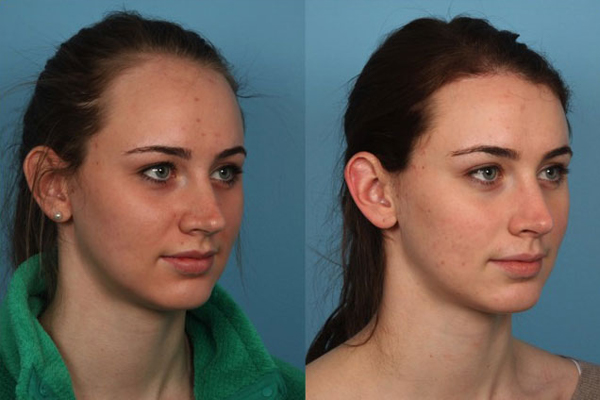Forehead Reduction
Forehead Reduction (also known as Frontal Boss Reduction or Reduction Rhinoplasty of the Forehead) is a cosmetic procedure designed to reduce the size or prominence of the forehead, particularly in cases where the forehead appears overly large or disproportionate to the rest of the face. This procedure is often sought by individuals with a high forehead or those looking for more balanced facial proportions.
Purpose of Forehead Reduction
-
Size Reduction:
- Minimizes the prominence or size of the forehead to create a more balanced facial appearance.
-
Aesthetic Improvement:
- Enhances facial harmony and symmetry by reducing the forehead's bulk.
-
Improved Proportions:
- Creates a more proportionate and aesthetically pleasing look for the upper face.
Techniques Used in Forehead Reduction
- Surgical Forehead Reduction:
- Involves removing a portion of the forehead bone to reduce its size and reshape the brow region.
- Endoscopic Forehead Reduction:
- Minimally invasive procedure using small incisions and specialized tools to reshape and reduce the size of the forehead with less visible scarring.
Procedure Overview
1. Consultation:
- Discussion of the patient’s goals, medical history, and facial structure.
- Physical examination to assess the forehead size and determine the extent of reduction required.
2. Preparation:
- Avoiding smoking, certain medications, and maintaining good health before surgery.
- Preoperative instructions include hygiene, avoiding specific medications, and post-surgery expectations.
3. During Surgery:
- Performed under general anesthesia or local anesthesia with sedation.
- Surgical Reduction involves making incisions at the hairline to access the forehead bone.
- Excess bone is reshaped or removed to achieve a more proportional forehead size.
Recovery
-
Initial Phase:
- Swelling, bruising, and discomfort for the first 1-2 weeks.
- Pain controlled with prescribed medications.
-
Activity:
- Avoid strenuous activities and heavy lifting for 4-6 weeks post-surgery.
- Avoid bending or pressure on the forehead area during recovery.
-
Full Recovery:
- Most swelling subsides within 4-6 weeks, with final results visible after several months.
Benefits
- Reduced forehead size and improved facial proportions.
- Enhanced symmetry and harmony of the facial features.
- Long-lasting results with minimal scarring, especially with endoscopic techniques.
Risks and Complications
- Scarring: Small incisions typically heal well with minimal scarring.
- Temporary numbness or changes in sensation in the forehead.
- Infection, bleeding, or delayed healing.
- Asymmetry or need for revision surgery (rare but possible).
Ideal Candidates
- Individuals with a disproportionately large or prominent forehead.
- Healthy individuals with realistic expectations and stable overall health.
- Those seeking improved facial balance and aesthetic appeal.
Post-Surgery Care
- Follow the surgeon’s instructions for wound care and managing swelling.
- Use cold compresses during the initial recovery period to reduce swelling.
- Regular follow-ups are recommended to monitor healing and refine results.



